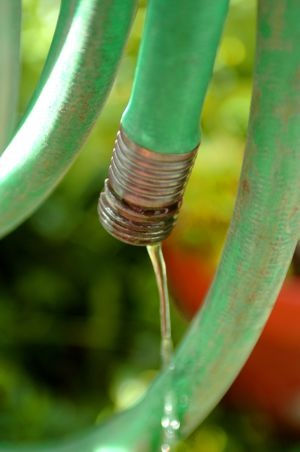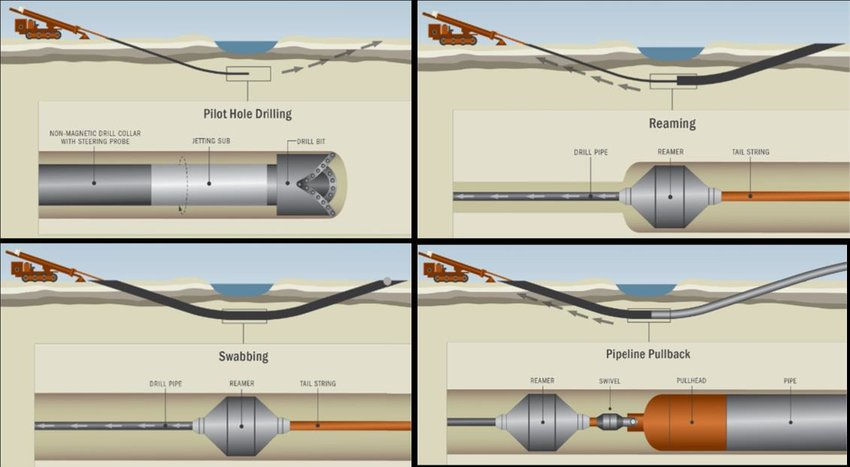What Are the Cost Considerations for Horizontal Directional Drilling Projects?
- Grid Tech
- Dec 18, 2023
- 4 min read
Horizontal Directional Drilling (HDD) has revolutionized the way underground utility installations are carried out. This trenchless method offers numerous advantages, but it is crucial to understand the cost considerations associated with HDD projects.
So, in this comprehensive guide blog, we will delve into the financial aspects of HDD, helping you make informed decisions for your drilling projects. Whether you are a contractor, project manager, or simply curious about HDD costs, read on to discover essential insights.
Let’ keep reading.

Cost Considerations for Horizontal Directional Drilling Projects
Equipment and Labor Costs:
Horizontal Directional Drilling (HDD) projects hinge upon a critical foundation of specialized equipment, including state-of-the-art drilling rigs, advanced mud recycling systems, and precision reamers. These machines, while indispensable, come with a substantial upfront investment. Furthermore, ongoing maintenance and upkeep further amplify the overall project expenses. Equally indispensable are the skilled operators who navigate these intricate systems, as their expertise ensures efficient operations but also contributes significantly to the total project cost. The synergy of skilled labor and specialized machinery underscores the intricacy and financial considerations associated with HDD ventures.
Site Assessment and Geology:
Effective site assessment and thorough geology studies form the bedrock of any successful Horizontal Directional Drilling (HDD) project. The intricacies of the underground terrain, encompassing variables such as soil types, rock structures, and the presence of existing utilities, directly influence drilling costs. Comprehensive investigations not only aid in identifying potential challenges but also facilitate the precise selection of equipment and techniques. This, in turn, optimizes the project's budget by ensuring that resources are allocated efficiently to tackle site-specific complexities.

Bore Length and Diameter:
The dimensions of the bore, both in terms of length and diameter, hold a central position in shaping the overall expenses of a Horizontal Directional Drilling (HDD) project. Extending the bore's length or increasing its diameter escalates the project's duration, necessitates additional labor, and demands more materials. HDD contractors typically base their charges on these parameters, underscoring the importance of a meticulous assessment of project specifications. This careful evaluation enables effective expense management while ensuring that resources are aligned with the project's needs.
Material Costs:
Horizontal Directional Drilling (HDD) endeavors necessitate a range of materials like drill pipes, specialized drilling fluids, and casing. The selection of these materials is contingent upon the unique demands of each project and the geological characteristics encountered. Material costs, which are susceptible to market fluctuations, can have a substantial influence on the project's budget. Therefore, adopting effective procurement strategies, including bulk purchasing or seeking cost-effective alternatives, is pivotal to managing overall project expenses efficiently.
Permitting and Regulatory Compliance:
Securing the requisite permits and adhering to stringent environmental regulations stands as a pivotal factor in the financial landscape of Horizontal Directional Drilling (HDD) projects. Delays stemming from permit-related issues can not only disrupt project timelines but also inflate costs significantly. Therefore, possessing a comprehensive grasp of the regulatory framework is imperative. Efficiently navigating this terrain not only mitigates potential delays and fines but also ensures that the project remains on budget, safeguarding its overall financial viability.

Utility Location and Verification:
Precise utility location and verification are indispensable safeguards against potentially disastrous accidents during the drilling process in Horizontal Directional Drilling (HDD) projects. Employing cutting-edge technologies such as ground-penetrating radar (GPR) and electromagnetic locators might contribute to the project's expenses, but they are pivotal for ensuring both safety and cost control. By accurately identifying existing utilities, these tools reduce the risk of costly damage, injuries, and project delays, ultimately preserving the project's budget and reputation.
Contingency Budget:
Horizontal Directional Drilling (HDD) projects are inherently unpredictable, given the potential for unforeseen challenges like unexpected rock formations or hidden underground obstacles. To preemptively address such uncertainties and maintain financial stability, it is prudent to allocate a contingency budget. This financial buffer provides the project with flexibility to tackle unexpected hurdles without derailing the overall budget. By planning for contingencies, HDD ventures can minimize risks and navigate uncertainties with greater confidence, ensuring the successful completion of the project.
Environmental Considerations:
Environmental factors, such as protecting water bodies and preserving sensitive habitats, may necessitate additional measures and costs. Implementing eco-friendly practices can align with regulatory requirements and minimize potential fines.
Project Timeline:
The duration of an HDD project directly affects its costs. Longer project timelines can increase labor, equipment, and material expenses. Efficient project management and scheduling can help control these costs.
Post-Drilling Restoration:
After completing the HDD bore, restoration efforts, such as backfilling and surface restoration, are essential. The cost of these activities should be factored into the project budget to ensure the site is returned to its original state.

Concluding Notes
In conclusion, understanding the cost considerations for horizontal directional drilling projects is vital for successful planning and execution. While HDD offers numerous advantages, including reduced environmental impact and minimal surface disruption, it's essential to navigate the financial aspects carefully.
By accounting for equipment, labor, site assessment, bore length, materials, permitting, utility verification, contingencies, environmental factors, project timelines, and restoration costs, you can create a comprehensive budget that ensures the project's success.
As HDD technology continues to evolve, staying informed about cost-related trends and innovations will be essential for efficient and cost-effective drilling projects.


Comments